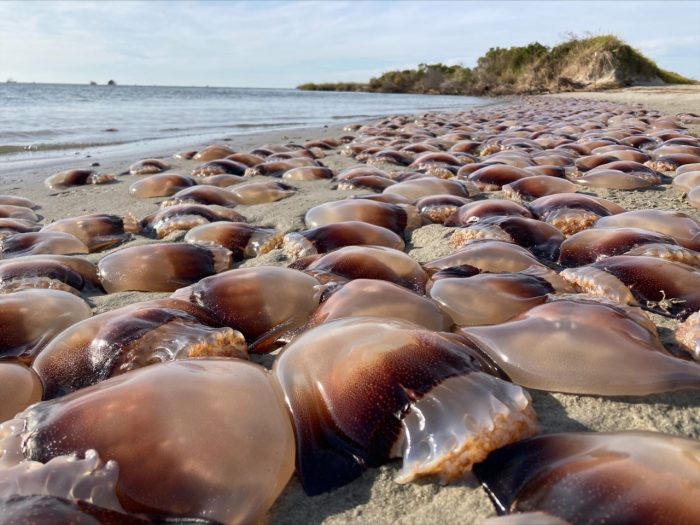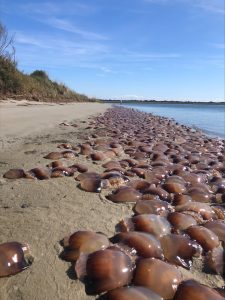
A large swarm of Cannonball Jellyfish has washed up on the northern end of Ocracoke Island, per a Wednesday update from the Cape Hatteras National Seashore (CHNS).
The event was caught on camera by the National Seashore, although multiple visitors and residents have reported seeing Cannonball Jellyfish both in the local waters, and along the Ocracoke and Hatteras Island shorelines.

“Jellyfish can’t swim, so they float along with the winds and currents,” stated CHNS in a social media update. “Colder water temperatures, winds, and currents can all play a role in them washing ashore.”
“What do these jellyfish eat? Zooplankton and Red Drum larvae. It’s spawning season for Red Drum, where a female can lay around 1.5 million eggs per batch. That’s a lot of jellyfish food!”
Although this particular species of jellyfish generally doesn’t produce a sting, the public is advised to avoid handling them as a precautionary measure.
Per the CHNS, the jellyfish will be left on the shoreline by the National Park Service to let nature take its course. “Some may wash back out with the tide, or become food for other living things on the Seashore like birds or crabs.”
The Cannonball Jellyfish are prevalent in multiple locations throughout the world, including the Pacific Ocean regions bordering China and Japan, as well as the Atlantic Ocean coastline from New England to Brazil. They are common on the southeastern coast of the United States, (including the East Coast and the Gulf Coast), and in this region, they are extremely abundant in the fall and summer months.
Though they are commonly spotted along the Outer Banks this time of year, it is extremely rare for so many to be reported in one area, and at one time.
For more information, as well as other National Seashore updates, check out the CHNS’ Facebook page at https://www.facebook.com/CapeHatterasNS/


